Tee Connie
Gait-based Age Group Classification with Adaptive Graph Neural Network
Oct 01, 2022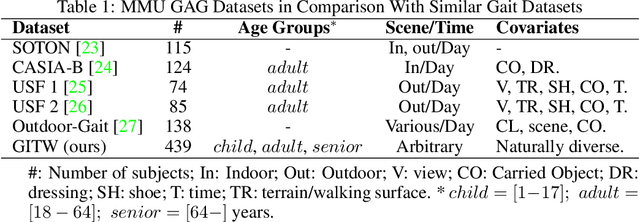

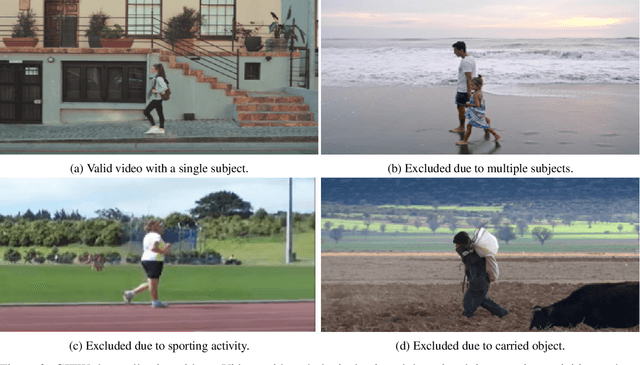

Abstract:Deep learning techniques have recently been utilized for model-free age-associated gait feature extraction. However, acquiring model-free gait demands accurate pre-processing such as background subtraction, which is non-trivial in unconstrained environments. On the other hand, model-based gait can be obtained without background subtraction and is less affected by covariates. For model-based gait-based age group classification problems, present works rely solely on handcrafted features, where feature extraction is tedious and requires domain expertise. This paper proposes a deep learning approach to extract age-associated features from model-based gait for age group classification. Specifically, we first develop an unconstrained gait dataset called Multimedia University Gait Age and Gender dataset (MMU GAG). Next, the body joint coordinates are determined via pose estimation algorithms and represented as compact gait graphs via a novel part aggregation scheme. Then, a Part-AdaptIve Residual Graph Convolutional Neural Network (PairGCN) is designed for age-associated feature learning. Experiments suggest that PairGCN features are far more informative than handcrafted features, yielding up to 99% accuracy for classifying subjects as a child, adult, or senior in the MMU GAG dataset.
Facial Expression Recognition Using a Hybrid CNN-SIFT Aggregator
Aug 12, 2017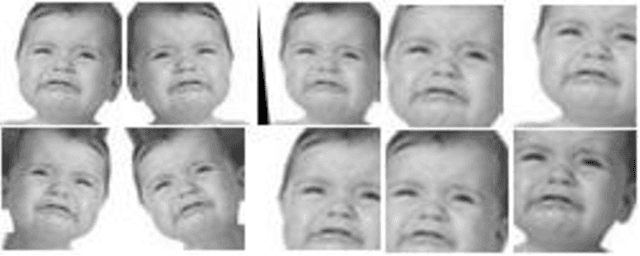


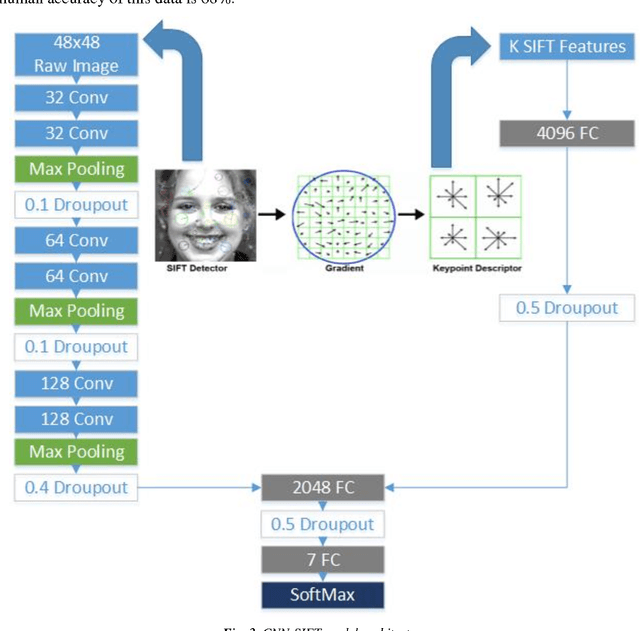
Abstract:Deriving an effective facial expression recognition component is important for a successful human-computer interaction system. Nonetheless, recognizing facial expression remains a challenging task. This paper describes a novel approach towards facial expression recognition task. The proposed method is motivated by the success of Convolutional Neural Networks (CNN) on the face recognition problem. Unlike other works, we focus on achieving good accuracy while requiring only a small sample data for training. Scale Invariant Feature Transform (SIFT) features are used to increase the performance on small data as SIFT does not require extensive training data to generate useful features. In this paper, both Dense SIFT and regular SIFT are studied and compared when merged with CNN features. Moreover, an aggregator of the models is developed. The proposed approach is tested on the FER-2013 and CK+ datasets. Results demonstrate the superiority of CNN with Dense SIFT over conventional CNN and CNN with SIFT. The accuracy even increased when all the models are aggregated which generates state-of-art results on FER-2013 and CK+ datasets, where it achieved 73.4% on FER-2013 and 99.1% on CK+.
Smart Content Recognition from Images Using a Mixture of Convolutional Neural Networks
Jul 14, 2017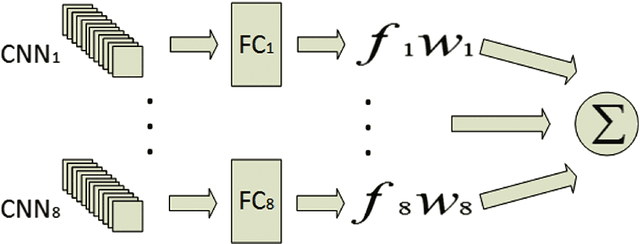
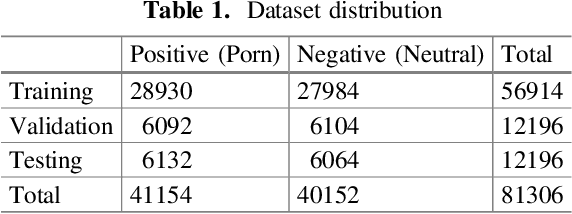


Abstract:With rapid development of the Internet, web contents become huge. Most of the websites are publicly available, and anyone can access the contents from anywhere such as workplace, home and even schools. Nevertheless, not all the web contents are appropriate for all users, especially children. An example of these contents is pornography images which should be restricted to certain age group. Besides, these images are not safe for work (NSFW) in which employees should not be seen accessing such contents during work. Recently, convolutional neural networks have been successfully applied to many computer vision problems. Inspired by these successes, we propose a mixture of convolutional neural networks for adult content recognition. Unlike other works, our method is formulated on a weighted sum of multiple deep neural network models. The weights of each CNN models are expressed as a linear regression problem learned using Ordinary Least Squares (OLS). Experimental results demonstrate that the proposed model outperforms both single CNN model and the average sum of CNN models in adult content recognition.
 Add to Chrome
Add to Chrome Add to Firefox
Add to Firefox Add to Edge
Add to Edge